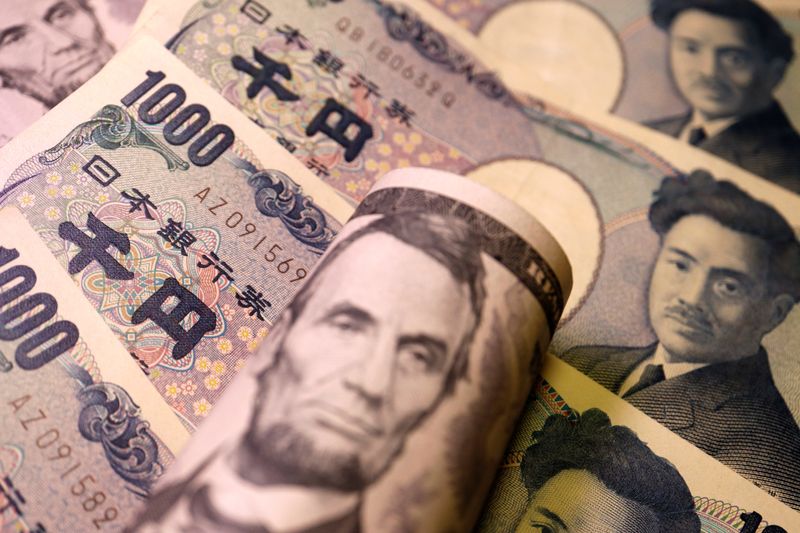By Ankur Banerjee and Harry Robertson
SINGAPORE/LONDON (Reuters) - The yen traded flat on Wednesday after surging almost 4% in the previous session, when the Bank of Japan (BOJ) unexpectedly tweaked a key policy, allowing government bond yields more room to move.
The BOJ decided to change its "yield curve control" policy on Tuesday even as it kept broad policy settings unchanged. It is now letting 10-year yields move 50 basis points either side of its 0% target, wider than the previous 25 basis point band.
On Wednesday, the yen was last up less than 0.1%, trading at 131.55 per dollar, not far off the four-month high of 130.58 touched on Tuesday, when the yen jumped 3.8% in its biggest one-day rise since 1998.
The surge was a sign that traders expect the BOJ to further tighten monetary policy in coming meetings, said Derek Halpenny, head of research at Japanese bank MUFG.
"The easiest way to express a view in this being the first step in a normalization process… was obviously in FX rather than in rates," he said.
Elsewhere in currency markets, the euro was up 0.11% against the dollar at $1.063. The British pound was down 0.25% to $1.216.
The BOJ's move marked a small step away from the central bank's ultra-loose monetary policy.
Japan, long preoccupied with reviving price growth to avert a risk of deflation, has been an outlier this year. It has kept interest rates negative while other central banks have hiked hard to tame inflation and bolster domestic currencies against the mighty U.S. dollar.
Traders are still digesting the BOJ's policy tweak, said Carol Kong, a currency strategist at the Commonwealth Bank of Australia.
"The market has interpreted the decision as step towards an eventual pivot from the current ultra-dovish monetary policy," she said. Kong added that the yen could continue to rise in the near term.
The Australian dollar fell 0.1% to $0.667, while the kiwi dropped 0.89% to $0.629. The Antipodean currencies were wobbly after suffering big losses against the yen as rising Japanese bond yields threatened to kill "carry trade" flows into Australia and New Zealand.
Activity in currency markets was winding down on Wednesday ahead of the festive period, with trading volumes low.
The story of 2022 has been the strength of the dollar, which has surged as the U.S. Federal Reserve has hiked interest rates at a rapid clip, luring investors back towards the country's fixed income assets.
Yet the dollar index has dropped roughly 9% since hitting a 20-year high in September, with a sharp slowdown in U.S. inflation raising hopes that the Fed may soon end its tightening cycle.
The index, which measures the dollar's performance against a basket of major currencies, was down less than 0.1% on Wednesday to 103.89. It remained around 8% higher for the year.

Many analysts expect the dollar to weaken further next year as inflation cools and the Fed's rate hikes come to an end.
Goldman Sachs (NYSE:GS) expects the euro to fall in the first three months of the year to $1.02, but to strengthen to $1.10 in 12 months' time.